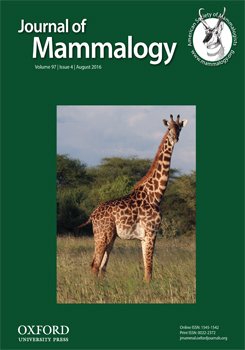The study of ultrasonic signaling has provided important insights into the ecology of bats and marine mammals, but it is poorly understood in other mammalian taxa. Recently, ultrasonic and high frequency vocalizations were described in southern flying squirrels (Glaucomys volans) in the southeastern United States and Ontario, Canada. Notable differences in many call characteristics suggest regional variation in G. volans communication. We evaluated this observation of regional variation by examining G. volans communication in a little studied portion of their range, the Central Hardwoods Region of the United States. We recorded calls of wild G. volans near West Point, Indiana, with Anabat II ultrasonic recorders. We described frequency and time characteristics of recorded calls, categorized call syllables into types, and used a canonical discriminant function analysis to refine our classification. Our analyses yielded 11 distinct types of G. volans syllables, 7 of which are unlike any calls described in other portions of the species range. This suggests G. volans either communicates in distinct regional dialects or has a much larger call repertoire than previously known. We recommend the creation of locally specific call libraries across the range of G. volans to ensure accuracy in the study of high frequency communication.
How to translate text using browser tools
11 May 2016
Novel Glaucomys volans vocalizations in Indiana and evidence of geographic variation in high frequency communication
Joseph W. Eisinger,
John S. Scheibe,
Elizabeth A. Flaherty
ACCESS THE FULL ARTICLE

Journal of Mammalogy
Vol. 97 • No. 4
August 2016
Vol. 97 • No. 4
August 2016




